On this page
Books about Terns The books are listed in order of publication date with the most recent at the top.
For more books about seabird in general see the;
Seabirds page
Terns
Family: Sternidae
Regular UK terns
Arctic Tern
Sterna paradisaea
Black Tern
Childonias niger
Common Tern
Sterna hirundo
Little Tern
Sterna albifrons
Roseate Tern
Sterna dougallii
Sandwich Tern
Sterna sandvicensis
Occasional visitors
Aleutian Tern
Sterna aleuticus
Bridled Tern
Sterna anaethetus
Cabot's Tern
Sterna acuflavida
Caspian Tern
Sterna caspia
Elegant Tern
Sterna elegans
Forster's Tern
Sterna forsteri
Gull-billed Tern
Gelochelidon nilotica
Lesser Crested Tern
Sterna bengalensis
Royal Tern
Sterna maxima
Sooty Tern
Sterna fuscata
Whiskered Tern
Childonias hybridus
White Winged Black Tern
Childonias leucopterus
Worldwide
The family Sternidae comprises 44 species of terns and noddies worldwide.
|
|
|
|
Orange Omelettes & Dusky Wanderers: Studies and Travels in Seychelles Over Four DecadesChris J Feare
Calusa Bay
2017
"Chris Feare is an ecologist whose career has been devoted to research on birds that interact with man's interests in the form of conservation problems or in posing threats to man's livelihoods and safety. He first visited Seychelles in 1971, living there for two years to undertake research on Sooty Terns and the effects of commercial harvesting of their eggs. This led to a lifelong interest in Sooty Terns and other seabirds, and to his enduring love of the islands. For over 40 years he has travelled widely in Seychelles and witnessed remarkable changes, affecting both birds and humans. The aim of Orange Omelettes & Dusky Wanderers is to describe these in the hope that they will interest Seychellois, tourists and visiting scientists alike, and also to inform his family and friends why he regularly forsakes Britain for the verdant mountains, white coral sands, crystal clear blue ocean and tropical warmth of this beautiful corner of the Indian Ocean."
|
 |
|
TernsDavid Cabot & Ian Nisbet
New Naturalist Series 123
Collins
2013
"This New Naturalist volume provides a much-anticipated overview of these fascinating birds – the first book on the natural history of British and Irish terns since 1934. Most of the five species of terns breeding in Britain and Ireland today are under intensive management, involving protection from predators, human interference, egg-collecting, recreational activities, land-use changes, and a range of issues concerning climate change, including rising sea levels and flooding of low-lying colonies. If these protective measures were abandoned then the numbers of terns would inevitably decline, with the possibility of several species ending up on the endangered list. Covering the history of terns in Britain and Ireland, David Cabot and Ian Nisbet explore these diverse issues as well as offering a comprehensive natural history of these stunning seabirds. Drawing on a wealth of new information and research, the authors focus on migrations, food and feeding ecology as well as breeding biology and behaviour. Perhaps most importantly, they highlight recent conservation issues and prospects, and what this means for the future of terns."
|
Buy from amazon.co.uk 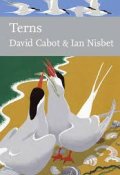
|
|
Gull and Tern Breeding Colonies on the North Arm of Great Slave Lake, Northwest Territories: 1986-2010Paul F. Woodard, Michael A. Fournier, and Myra O. Wiebe Robertson
Canadian Wildlife Service
2013
"Summarizes data and information on active larid breeding colonies collected between 1986 and 2010 on the portion of the North Arm west of Yellowknife. Most data were collected through ground surveys, with travel by boat, between mid June to early July. Information recorded at each colony included species, number of nests, clutch size, presence of chicks, and habitat characteristics."
|
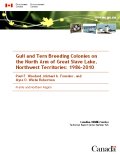 |
|
Review and Application of Statistical Techniques to Model the At-sea
Distributions of Breeding Sandwich TernsChris B. Thaxter, Aonghais S.C.P. Cook, Alison Johnston & Niall H.K. Burton
BTO Report 582
British Trust for Ornithology
2011
"A large number of seabird colonies have been designated as Special Protection Areas (SPAs) in the UK due to the international or national importance of their breeding seabird populations. However, to date, the associated ma rine foraging grounds of these seabirds have not been designated. While this requirement has long been recognised, standard methodologies for assessing the precise boundaries of foraging grounds for designation are still being developed. The aim of this work was to identify and implement the most suitable approach for modelling the at-sea foraging distribution of Sandwich Terns Sterna sandvicensis breeding in the North Norfolk Coast SPA, using data collected on the species' foraging locations from that SPA and associated environmental datasets. This will aid Natural England in the identification of a possible extension to the North Norfolk Coast SPA, and also inform on the Joint Nature Conservation Committee's anticipated UK-wide approach for identifying marine extensions, or additional areas, to breeding seabird colony SPAs."
|
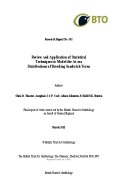 |
|
Seabirds: A Natural HistoryTony Gaston
Poyser
2004
"This title takes an in-depth look at the lives of the world's true seabirds - the penguins, tubenoses, peleceaniids, gulls, terns, skuas and auks. These birds all spend much of their lives foraging at sea, but the range of ways that they are adapted to exploit the marine environment and balance this with the need to return to land to breed, is astoundingly diverse. They range from the albatrosses, which take their prey from the surface of the water and are capable of efficient gliding flight for hours on end, to the penguins which have dispensed with flight altogether and have developed a morphology and physiology which enables them to dive deeper and for longer than any other birds. The various problems of being a bird which forages at sea, and the array of solutions evolution has produced to counter them are the theme of this book, which should fascinate everyone with an interest in pelagic birds."
|
Buy from amazon.co.uk 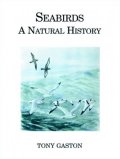
|
|
A Study of the risk of collision with power lines by Common Terns and waterbirds at Shotton Steel Works, North WalesD.E. Balmer, S.J. Holloway, N.H.K. Burton & N.A. Clark
BTO Report 280
British Trust for Ornithology
2002
"At Shotton Steel Works, North Wales, over 540 pairs of Common Terns breed within the industrial complex. A report by Henderson et al.(1995) investigated the risk of collision with power lines in relation to the stage of the breeding season and time demands on adults, the age of the birds, the significance of distance between the power lines and the breeding colony and climatic variables. Balmer (1998) re-assessed the risk of collision with power lines of terns crossing the 132 kV line and in addition investigated the use of the two breeding islands in relation to the pattern of crossing the power lines. The lagoons are also used by significant numbers of waterfowl (Cormorant, Grey Heron, wildfowl, and Gulls) outside of the breeding season, and reports by Balmer et al.(1995),and Balmer & Holloway(1998) investigated the impact of the power lines on the waterbirds flying onto and leaving the lagoons. The aim of the two studies within this report was to assess the impact of the new 132 kV line (Line 3), sited between the existing 132 kVline (Line 1) and the lagoons, on the tern colony and other waterbirds using the lagoons."
|
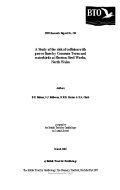 |
|
A Study Of The Risk Of Collision With Power Lines By Common Terns At Shotton Steel Works, North WalesD.E. Balmer
BTO Report 208
British Trust for Ornithology
1998
"At Shotton Steel Works, North Wales, 470 pairs of Common Terns breed within the industrial complex. A report by Henderson et al. (1994) investigated the risk of collision with power lines in relation to the stage of the breeding season and time demands on adults, the age of birds, the significance of distance between the power lines and the breeding colony and climatic variables. The aim of this study was to re-assess the risk of collision with power lines of terns crossing the 132 kV line."
|
 |
|
Impact Of Sea Gull Presence On The Reproductive Success And Vigilance Behaviour Of Common Terns In Kouchibouguac National Park, New BrunswickParks Canada
1997
A 10 page report.
|
|
|
Terns of Europe and North AmericaKlaus Malling Olsen
Illustrations: Hans Larsson
Christopher Helm
1995
The guide covers 23 species of Western Paleartic and North American Terns. The individual species text includes sections on field identification, moult, description, geographical variation, measurements and weight. Thereis a quick reference section summarising the key identification features. Also includes 48 colour plates and distribution maps.
|
Buy from amazon.co.uk 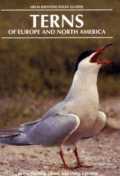
|
|
A Study Of The Risk Of Collision With Power Lines By Common Terns At Shotton Steel Works, North WalesI.G. Henderson, R.H.W. Langston & N.A. Clark
BTO Report 144
British Trust for Ornithology
1995
"At Shotton Steel Works, North Wales, 200 pairs of Common Terns breed within the industrial complex and each journey from the breeding colony to the estuary means that the birds must negotiate two spans of power lines, yet their vulnerability to collisions with power lines is unknown. The construction of a new 400 kV power line close to the ternery provided an opportunity to observe this vulnerability. The study reported here therefore investigated the risk of collision with power lines in relation to the stage of the breeding season and time demands on adults, the age of birds, the significance of distance between the power lines and the breeding colony and climatic variables such as wind speed."
|
 |
|
Habitat Selection and Productivity of Least Terns on the Lower Platte River, NebraskaEileen Kirsch
Monographs No.132
Wildlife Society
1996
A 48 page monograph. From the abstract: "Least terns (Sterna antillarum) were studied on the lower Platte River, Nebraska, where this endangered population nests on natural sandbar habitat and on sandpit sites created by gravel dredging adjacent to the river. Theoretically terns should select habitats according to habitat suitability. However, the introduction of sandpits and conversion of tallgrass prairies along the river banks to agriculture, residential, and wooded areas may have affected terns' abilities to distinguish suitable habitat or the suitability of nesting habitats in general. I examined habitat selection and productivity of least terns to determine if terns selected habitat according to suitability (as indicated by productivity), what factors affected habitat selection and productivity, and if estimated productivity could support this population."
|
 |
|
The Common TernRob Hume
Hamlyn Species Guide
Hamlyn
1993
An illustrated monograph describing breeding, migration, plumage, displays, courtship, feeding and nesting.
|
Buy from amazon.co.uk 
|
|
A Beach for the BirdsBruce McMillan
Houghton Mifflin
1993
Discusses the physical characteristics and habits of the endangered Least Terns and describes the Maine beach where they spend the summer and raise their young, alongside their human neighbours.
|
Buy from amazon.co.uk 
|
|
Island of Terns: Warden of Scolt HeadBob Chestney
Quiller Press
1993
"Autobiographical account of the life and career of Bob Chestney MBE and his work at the National Trust island reserve on the North Norfolk coast."
|
Buy from amazon.co.uk 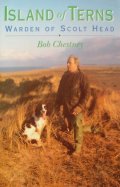
|
|
The Common Tern: Its Breeding Biology and Social BehaviorJoanna Burger and Michael Gochfeld
Columbia University Press
1991
For more than twenty years the authors studied the complex breeding and social behaviour of colonies of terns. A significant dynamic of their social behavior is their "mobbing" behaviour when they aggressively defend their nests against predators and will attack intruders, including human beings. Analysis of this and other behaviours as they affect breeding and population provide fascinating insights in the study of birds.
|
Buy from amazon.co.uk 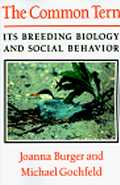
|
|
The Bird of LightJohn Hay
W W Norton & Co
1991
"Set in Cape Cod, Hay's book centers on the spring arrival of terns, their courtship, breeding, feeding habits, fall departures, and winter life. For Hay, the world of terns is an effective microcosm, good for musings and philosophy on the health of the biosphere, the state of the world, and the human condition. His ruminations are strengthened by scientific counsel gleaned from his friendships with world authorities on terns. Excellent writing, good science, and fine reading." Library Journal.
|
Buy from amazon.co.uk 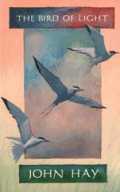
|
|
A Guide To Little Tern ConservationRichard C. Knight; Pamela C. Haddon
RSPB
1983
|
 |
|
Functional And Causal Aspects Of Nest Distribution In Colonies Of The Sandwich TernJ. Veen
E.J.Brill
1977
From the abstract: "The main part of this study is an attempt to investigate whether in the sandwich tern colonial nesting enhances reproductive success, and if so how this comes about (chapter II). Besides, attention is paid to the behavioural causation of colonial nesting (chapter III). Considering the various ways in which colonial nesting might influence success, a study of function would ideally require a comprehensive study of all environmental factors. Although the relationship between nest distribution and several environmental factors will be touched upon in this study, my concern has been primarily with predation."
|
Buy from amazon.co.uk 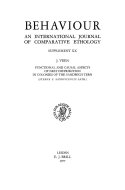
|
|
Spirit of Survival: A Natural and Personal History of TernsJohn Hay
?
1974
|
Buy from amazon.co.uk 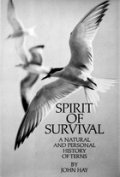
|
|
Water-Birds With Webbed Feet
Paul Geroudet
Translation: Phyllis Barclay-Smith
Blandford
1965
Originally published in Switzerland.
Covers webbed feet birds of Western Europe.
|
Buy from amazon.co.uk 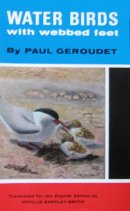
|
|
A Behavior Study of The Common TernRalph S. Palmer
Boston Society of Natural History
1941
From the introduction: "This paper deals with the behavior of the Common Tern (Sterna hirundo hirundo L.) as studied in Maine. While working on this problem, the writer has consulted not only the published data on this bird and on various other terns and gulls, but also the literature on bird behavior in general. This was done in the hope of arriving at some understanding of what has been observed in and about terneries. The major part of the field work was undertaken at the Sugarloaf Islands, near Popham Beach, Sagadahoc County, Maine."
|
Buy from amazon.co.uk 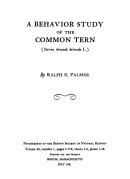
|
|
Sea Terns Or Sea Swallows. Their Habits, Language, Arrival And DepartureG. Marples and A. Marples
Country Life
1934
A 227 study with 117 black and white photographs plus illustrations and diagrams.
|
Buy from amazon.co.uk 
|
|
The Home Life Of The Terns Or Sea SwallowsW. Bickerton
Witherby & Co
1912
From chapter 1: "Five species of the beautiful and interesting family of Terns or Sea-Swallows visit the British Isles every summer for their nesting season, returning to the more genial climes of the south again in early autumn; and although these all belong to the same genus {Sterna), and do not, unfortunately, include any of the marsh-haunting species, they nevertheless form a most fascinating group of birds - well worthy of specialised study as a group and as individual species. It would ordinarily be expected that in any natural group of closely-related birds there would be many and striking proofs of the family relationships, but it may well be doubted whether our whole British list contains another group of five birds belonging to any one genus, which present among themselves more close and obvious resemblances, both in general appearance and in habits and characteristics, than do our species of nesting Terns. None of the five, for instance, shows any conspicuous departure from the general colour-scheme of the genus, viz. black cap, grey mantle and wings, and white or pearl-grey under-parts; while all agree in having long, pointed wings, forked tails and short legs, and in exhibiting a manner of flight which is at once so easy, buoyant and graceful as to render it quite distinctive even among sea-fowl. All again (so far as the British Isles are concerned) are summer visitors only; all are gregarious, though in differing degrees; generally speaking, all show a marked preference for insular and marine, rather than for inland or freshwater habitats. All nest on the ground, choosing sites on the bare sand (whether of the gently-sloping shore or the higher sand-dunes), the shingle, the short grass, or the bare or lichen-grown rocks, according to circumstances. None of the species, again, displays much predilection or aptitude for nest-building; the homes they prefer are at best mere collections of material rather than definitely-arranged structures, and are far more rudimentary in type than the larger and more shapely and orderly nests built by their nearest relations the Gulls. The eggs again - differences in size of course excepted - show marked similarity both as regards number (one to three), shape, ground-colour and markings. All our Terns are characterised by call or alarm-notes having a somewhat similar harsh or grating quality; while all pursue the same general method of obtaining their food, viz. by actually plunging down from a height into the water in order to capture their living prey."
|

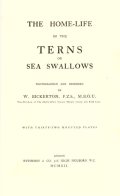
 |
|
Terns, or Sea SwallowsThomas Southwell
Editor: H. E. Dresser
Educational Series No. 12
Society for the Protection of Birds
1890's
A 4 page guide that covers the Common Tern and Lesser Tern. Provides a brief description and information on distribution, numbers, food, characteristics, protection, plus two pages of general remarks.
|
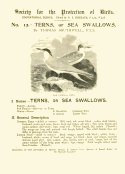 |
|
Catalogue Of The Gaviae And Tubinares In The Collection Of The British MuseumCatalogue Of The Birds In The British Museum, Volume XXV
Gaviae (Terns, Gulls and Skuas): Howard Saunders
Tubinares (Petrels and Albatrosses): Osbert Salvin
8 colour plates: J. Smit
Printed By Order Of The Trustees
Sold by: Longman & Co.; B. Quaritch; Kegan Paul, Trench, Trubner & Co.; and at the British Museum (Natural History)
1896
Preface: "It has been a fortunate circumstance that for the preparation of the present Volume the cooperation of Mr. H. Saunders and Mr. 0. Salvin could be secured, who for many years past have made the Birds of the families of Gulls and Petrels the special subject of their respective studies. As also the collections formed by these gentlemen have been incorporated with the series in the British Museum, the latter possesses of both these groups a collection unrivalled as to its intrinsic value, if not also as to the number of species and specimens. According to the lists given, this Collection consists now of Gaviae 115 and Tubinares 109. Among the Tubinares only, some of the species (15) are not represented in the Collection. Beside the many friends and correspondents who have rendered material assistance in the preparation of this Volume by the loan or gift of specimens, and who "will be enumerated in the introductory remarks of the Authors, I have to refer specially to the authorities of the United States National Museum and to the Hon. W. Rothschild, of whom the former sent important types for comparison, whilst the latter placed the whole of his rich collection at the disposal of Ihe Authors. I have acceded with pleasure to the request of the Director of the Museum to see through the press this and the two remaining Volumes for which the arrangements were made during my term of office. Finally, this would seem to be an appropriate place to pay a tribute to the memory of Henry Seebohm, by whose death, on November 26th, Ornithology has lost a most earnest and ardent student and the British Museum one of its most generous friends and benefactors. For the past fifteen years he took a deep interest in the growth and arrangement of the Collection of Birds in the British Museum, contributing, without stint, either from his own Collection or by special purchase, any specimens that were required to complete the Museum series or to aid in the preparation of the Catalogue. In the latter work he took an active part as the author of the Fifth Volume, which treated of the Warblers and Thrushes. After presenting his immense Collection of Eggs, and incorporating it with that of the Museum, he undertook and completed a Manuscript Catalogue of the whole. By his Will he conferred his last benefit on the Museum, bequeathing to the Trustees the entire Collection which at the time of his death was still in his possession."
|

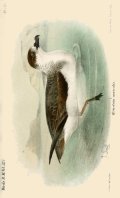
 |
|